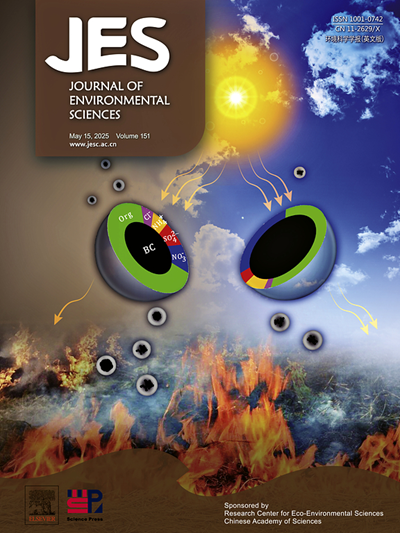Pollution sources, characteristics and environmental risk assessment of heavy metals in surface water and sediments of typical pyrite mine in Southwest China
IF 5.9
2区 环境科学与生态学
Q1 ENVIRONMENTAL SCIENCES
引用次数: 0
Abstract
Abandoned mines, especially pyrite-rich ones, release acid mine drainage (AMD) with high acidity and excessive amounts of heavy metals, threatening regional ecosystems. Six samples of mine drainage, nine samples of surface water, and twelve samples of sediment were analyzed in this case study of the Dashu pyrite mine in southwest China. A comprehensive analysis of the pollution levels, pollution sources, and potential hazards of eight metals (Ni, Cd, Cu, Zn, Fe, Al, Pb, and Mn) that exceeded regulatory standards was conducted by monitoring 24 conventional and characteristic indicators. Ultimately, this research evaluated the environmental hazards associated with abandoned mine water using the "pressure-response" model, thereby providing valuable insights for the effective protection of the environment in mining regions. The primary pollutants in mine water were determined to be SO42−, Fe, and Mn, with concentrations of 7700, 1450, and 6.78 mg/L, respectively. A clear "source-sink" dynamic was observed between the mine water and the surrounding water system. surface water was primarily polluted by Ni and Mn, while water system sediments were primarily polluted by Cu and Hg. Ion ratio and Pearson correlation analyses indicated heavy metals in surface water and sediments originated from the same AMD source. The "pressure-response" model was used to assess the environmental hazards of water from abandoned mines. Mines W1, W2, W5, and W6 were classified as high-risk, while W3 and W4 were medium-risk. This study offers a novel approach and valuable reference for identifying and classifying environmental risks in abandoned mines and targeting AMD treatment.
西南典型黄铁矿地表水及沉积物中重金属污染来源、特征及环境风险评价
废弃矿山,特别是富含黄铁矿的矿山,释放出酸度高、重金属含量超标的酸性矿水,对区域生态系统构成威胁。以西南大树黄铁矿为例,分析了6个矿井水样、9个地表水样和12个沉积物样。通过对24项常规指标和特征指标的监测,对超过监管标准的8种金属(Ni、Cd、Cu、Zn、Fe、Al、Pb、Mn)的污染水平、污染源和潜在危害进行了综合分析。最后,利用“压力-响应”模型对矿山废弃水的环境危害进行了评价,为矿区环境的有效保护提供了有价值的见解。矿井水主要污染物为SO42−、Fe和Mn,浓度分别为7700、1450和6.78 mg/L。矿井水与周围水系之间存在明显的“源-汇”动态关系。地表水主要受Ni和Mn污染,水系沉积物主要受Cu和Hg污染。离子比和Pearson相关分析表明,地表水和沉积物中的重金属来源于同一AMD源。采用“压力-响应”模型对废弃矿井水的环境危害进行了评价。W1、W2、W5、W6为高风险,W3、W4为中等风险。本研究为识别和分类废弃矿山环境风险,针对性地防治AMD提供了新的思路和有价值的参考。
本文章由计算机程序翻译,如有差异,请以英文原文为准。
求助全文
约1分钟内获得全文
求助全文
来源期刊

Journal of Environmental Sciences-china
环境科学-环境科学
CiteScore
13.70
自引率
0.00%
发文量
6354
审稿时长
2.6 months
期刊介绍:
The Journal of Environmental Sciences is an international journal started in 1989. The journal is devoted to publish original, peer-reviewed research papers on main aspects of environmental sciences, such as environmental chemistry, environmental biology, ecology, geosciences and environmental physics. Appropriate subjects include basic and applied research on atmospheric, terrestrial and aquatic environments, pollution control and abatement technology, conservation of natural resources, environmental health and toxicology. Announcements of international environmental science meetings and other recent information are also included.
 求助内容:
求助内容: 应助结果提醒方式:
应助结果提醒方式:


